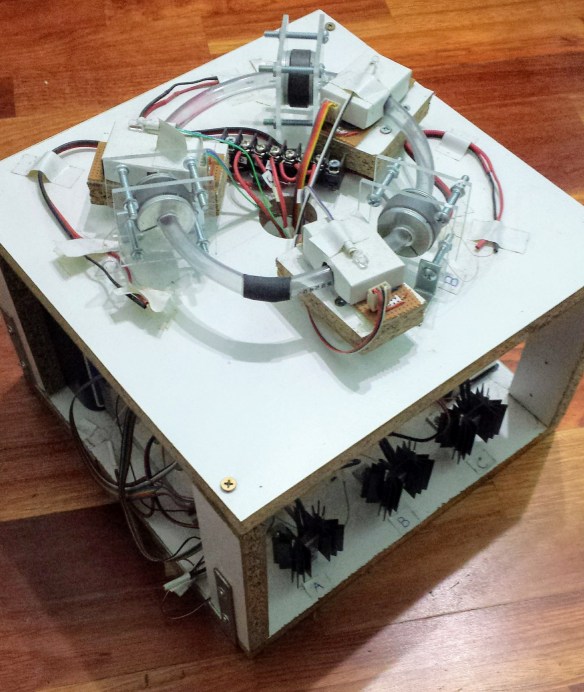Particle accelerators, monumental in the realm of modern physics, are fascinating devices designed to propel charged particles, such as protons or electrons, to significant fractions of the speed of light. Their capabilities extend far beyond mere particle collisions; they serve as invaluable instruments in medical practices, materials science, and fundamental research into the very fabric of our universe. However, an inquiry often surfaces amidst the grandeur of their potential: “How much does a particle accelerator cost?” The answer is multifaceted, necessitating a nuanced exploration into the types of accelerators, their construction, operational costs, and broader implications.
The spectrum of particle accelerators is vast, ranging from compact laboratory setups to colossal installations like the Large Hadron Collider (LHC) at CERN. The cost of these technologies can vary dramatically, primarily influenced by their scale, complexity, and intended application. For instance, a small, laboratory-scale accelerator designed for educational purposes or preliminary research might be constructed for a few hundred thousand dollars. In contrast, a large-scale facility, such as the LHC, requires a staggering investment, estimated to be in the vicinity of $10 billion, inclusive of construction, development, and ongoing operational expenses.
Before delving deeper, let us delineate the primary categories of particle accelerators: linear accelerators (linacs), cyclotrons, synchrotrons, and colliders. Each type manifests distinct designs incorporating various technological advancements, influencing both their operational methodologies and financial prerequisites.
Linear accelerators, for example, accelerate particles in a straight line using oscillating electric fields. They are relatively cost-effective, allowing for varying scale operations. Prices for small linacs can commence at approximately $200,000, accommodating educational institutions and research organizations. As they scale up for more complex applications, this cost may reach into the millions.
Cyclotrons, another prevalent type, leverage magnetic fields to expedite particles in a spiral trajectory. These devices tend to be less expensive than their larger counterparts but can still be quite costly based on the specific requirements of the experiments. A basic cyclotron might begin around $1 million, yet advanced models can escalate to several million dollars, particularly when incorporating sophisticated technologies for isotope generation or proton therapy in medical settings.
Synchrotrons represent a more advanced classification of accelerators, designed to maintain a constant energy level as particles traverse circular paths. Due to the complexity of their construction and maintenance, they typically demand substantial investment. Initial construction outlays can range from $300 million to several billion dollars, fluctuating with the specific application and design intricacies.
Colliders are perhaps the most renowned of these types, designed to smash particles together at incredibly high velocities, thus enabling physicists to investigate fundamental questions regarding matter and the universe. The aforementioned LHC is a paragon of this category, representing one of the largest and most expensive scientific endeavors in history. Its financial demand is a cumulative consequence of underground construction, state-of-the-art technology, and extensive worldwide collaboration. The grandiosity of its cost epitomizes the monumental financial commitments required in cutting-edge scientific research.
However, the costs associated with particle accelerators go far beyond initial construction expenses. Operational costs can be equally staggering, encompassing maintenance, energy consumption, personnel wages, and ongoing research initiatives. For large-scale colliders, energy requirements alone can escalate to millions of dollars annually. This recurring expenditure becomes crucial for institutions and countries considering investment in such archipelagos of scientific discovery.
The financial contemplation does not merely rest upon direct costs; it also encompasses the opportunity costs and broader societal implications. The investments in accelerators must be weighed against the possibly transformative scientific advancements they engender. For instance, research from the LHC has culminated in the significant discovery of the Higgs boson, an achievement reshaping our understanding of particle physics. Similar grants may lead to revolutionary breakthroughs within medicine and material science, projecting promises of enhancing societal health standards, improving technologies, and forging innovations across myriad fields.
In recent years, as technological innovations proliferate, a new paradigm emerges by introducing compact particle accelerators. These groundbreaking developments strive to deliver the functionalities of traditional accelerators while reducing costs and physical footprint. Such compact designs could potentially transform the landscape of particle physics, making the tools of advanced research more accessible to institutions previously constrained by exorbitant costs. While these nascent technologies promise to democratize science, placing sophisticated tools within reach of smaller laboratories and academic institutions, they too entail an initial investment that might outweigh conventional options depending on the application.
The question of “How much does a particle accelerator cost?” thus unveils a labyrinth of considerations, each one instrumental in elucidating the complex financial ecosystem surrounding these magical machines. As exploration into the subatomic world continues, the balance between cost, technology advancements, and the potential for groundbreaking discovery will remain pivotal in shaping the future of particle physics and its myriad applications. Contemplating the financial implications inspires reflections on how science is funded and, in turn, how it profoundly alters our understanding of existence itself, inviting us all to ponder where the next great frontier of human knowledge resides.












